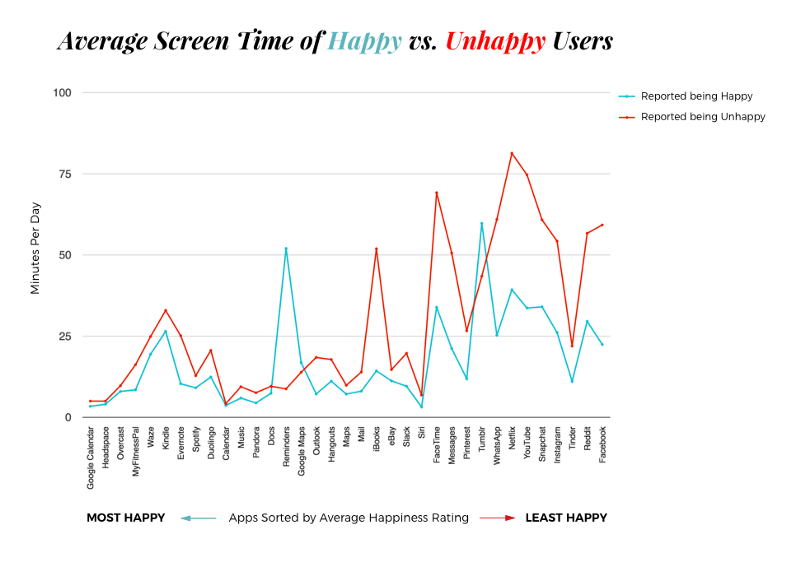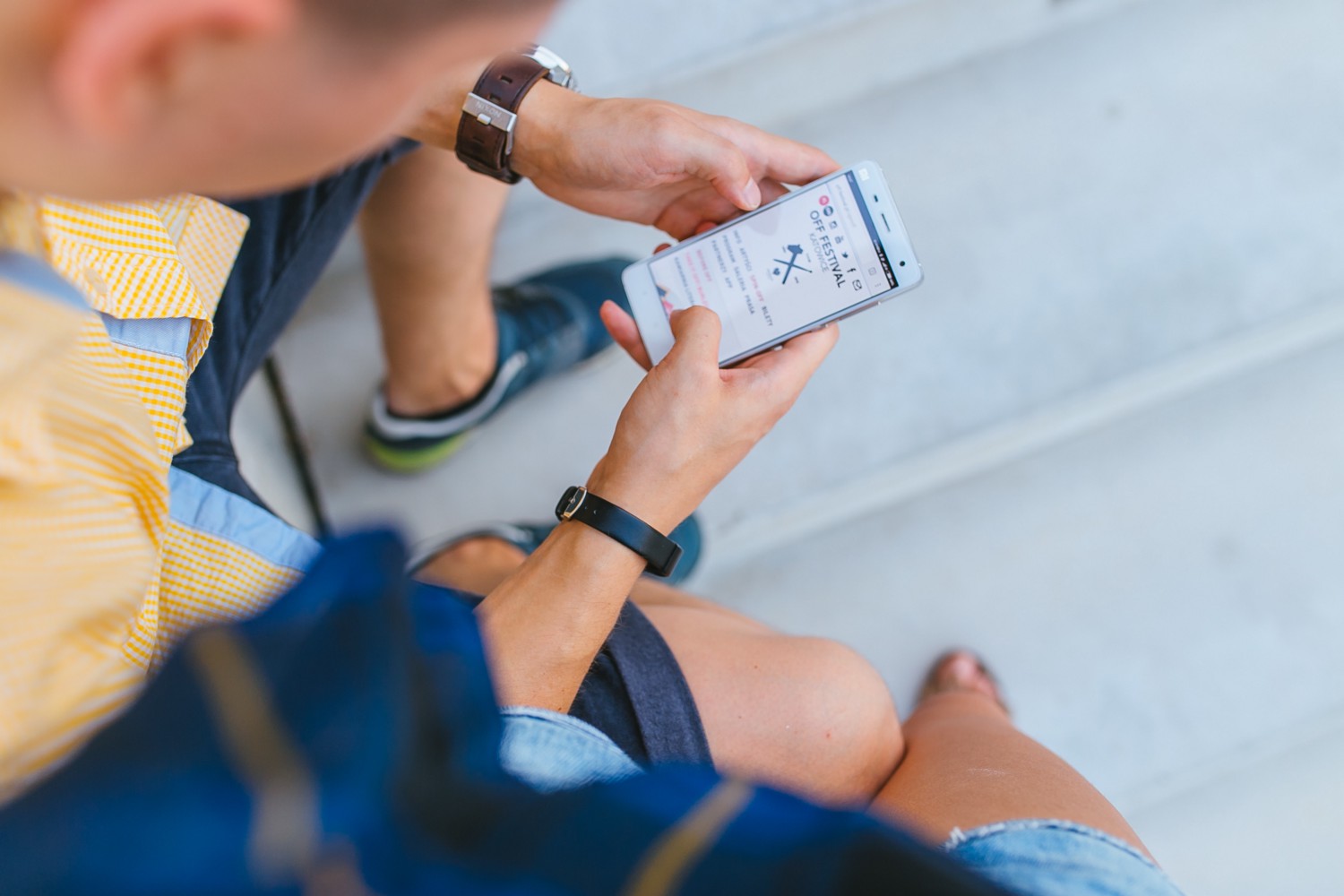
When it comes to app use, less is — perhaps surprisingly — more.
Whether it’s Facebook, Snapchat, or Instagram, users who spend lots of time on a given app feel worse about their use than those who spend less. That’s according to data provided to Thrive Global from Moment, an app that tracks people’s iPhone use. (An Android version is on the way, too.)
About half a million people use Moment, and some 20,000 of them recently reported on if they felt happy or unhappy with the time they spend on individual apps. Consistently, people who used apps less felt better about their time than those who spent more.
Just how much is shown in the below chart, where the teal line marks the time spent by the happy users, and the red plots the unhappy use. The apps where people felt happiest about their use are to the left — a ranking we dug into in a previous post — and to the right are those with the lowest happiness ratings.

As you can see, the general trend is that the less happy people are with an app, the more time they spend on it, and the greater the gap between happy and unhappy use.
Satisfied Instagrammers spent 26 minutes a day scrolling through brunches and sunsets; the unhappy spent 54. YouTubers content with their video viewing spent a mere 33 minutes a day on the app, compared with the unhappy who spent 74.

According to Moment data, the average iPhone user shuffles through a dozen apps a day, and they spend about half their time on their phone with whatever their two go-to programs are: the first for 76 minutes a day, the second for 43 minutes. You can’t be certain that this would generalize to everybody though, since this data is pulled from a sample of people tech savvy and self-aware enough to use an app that tracks their app use.
“There is a happiness breaking point for each app,” says Kevin Holesh, Moment’s founder and developer. For Facebook, it’s 20 minutes — spend less than that and you’ll likely be happy with your use of the app, spend more and you won’t be. “We know this because of the surveys taken by tens of thousands of people in Moment,” he tells Thrive Global, and academic research has found much the same. “Facebook knows this too, but they don’t share it publicly,” he adds.
To Holesh, and other people involved in Time Well Spent, the movement for more humanistic technology design, the gap between happy and unhappy app use underscores the (perhaps unseen) conflict between software creators and users. The former want as much attention or “engagement” as possible — consider Reed Hastings’ remark that Netflix’s competition isn’t HBO, it’s sleep — while the latter want the product to solve some problem, keep them in touch with people, make their lives more efficient, or fill another need.
“A person’s goal is never ‘I want to spend as much time on Facebook as possible,’ although that is almost certainly Facebook’s goal,” Holesh says. “The average person spends 55 minutes on Facebook each day. Despite any justifications the designers made in making Facebook ‘more engaging,’ it doesn’t matter to Facebook if that last 35 minutes doesn’t make you happier; it makes Facebook 60 percent richer.”
Originally published at journal.thriveglobal.com


